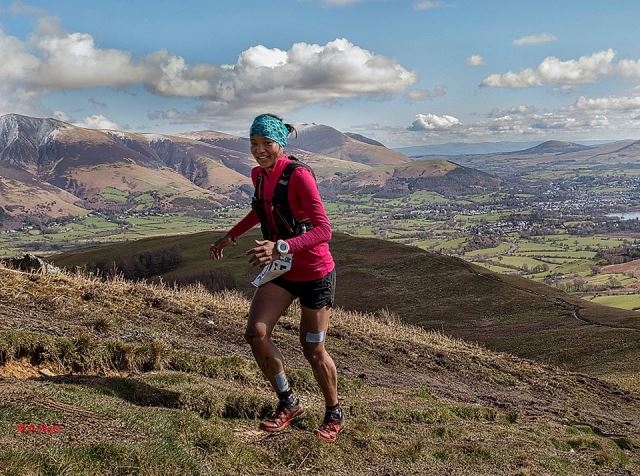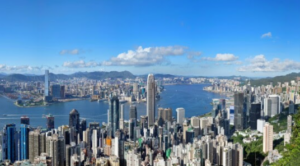Mira Rai voted National Geographic’s 2017 People’s Choice Adventurer of the Year

Washington : Mira Rai, a Nepali trail runner, has been named the 2017 National Geographic People’s Choice Adventurer of the Year for her tireless efforts in breaking down barriers for women in Nepal through sports.
She was selected from an impressive group of adventurers whose extraordinary achievements in exploration, conservation, humanitarianism and adventure sports distinguished them in the past year.
The 10 honorees were announced on Nov. 3, 2016, and the public was invited to vote through Dec. 16, 2016, for the People’s Choice Adventurer of the Year according to a statement of National Geographic.
Rai is a high-elevation racing phenom in Nepal who has placed at international trail running races in both Australia and Europe. In 2015, she received second place in the Skyrunning World Competitions. In a country where access to education is limited for girls and women don’t have time to study, the strides Rai has taken to compete as an international elite athlete are truly inspiring.
A ruptured ACL in early 2016 forced Mira to undergo surgery and put her running career on hold. During her recovery, she took on an active role in encouraging others to run by organizing the first ever running race in her home village of Bhojpur, Nepal. She secured 90 pairs of running shoes for children who do not have them and raised money through her running community, a pasta sale in Italy and screenings of a movie about her journey, entitled Mira, at the Banff Mountain Film Festival.
“Mira is an outstanding natural athlete with huge potential in trail running,” said Mary Anne Potts, editorial director of National Geographic Adventure. “She’s had the courage to break with traditional expectations to follow her dreams—and she is determined now to use her experience to empower the younger generation in Nepal.”
2017 Adventurers of the Year People’s Choice nominees are:
The Hōkūle‘a Team, comprised of celestial circumnavigators who have embarked on a four-year journey across large swaths of oceans in the famed Hōkūle‘a voyaging canoe guided only by the stars and the belief that Polynesian culture should not be lost to the wake of modernization. In the process, they ignited a cultural restoration in Hawaii and taught a new generation of adventurers how to navigate by the stars. Nainoa Thompson, a member of the team, was a 2016 recipient of the National Geographic Society’s most prestigious award, the Hubbard medal.
Kristine McDivitt Tompkins, an American business woman and adventurer turned conservationist. Tompkins funded the creation of a large wilderness conservation areas in the heart of South America’s famed Patagonia region. Along with her late husband, Doug Tompkins, she helped create five national parks and preserved more than 2.5 million acres of mountains, forests, waterways and the fauna that depend on the landscape.
Krzysztof Starnawski, a Polish cave diver and National Geographic Explorer who discovered the world’s deepest underwater cave in the fall of 2016. For two decades Starnawski believed that the Hranická Propast cave complex in the Czech Republic could be the deepest underwater cave system in the world. Last year, he discovered a small passage 800 feet down that he squirmed through to discover a deeper chamber. This fall he went all the way to the bottom (1,325 feet) using a combination of human and ROV-enabled exploration.
Peter McBride and Kevin Fedarko, American hikers, journalists, and National Geographic Explorers, both with long ties to the Grand Canyon, embarked on an incredible journey to hike its entire length—875 mostly trail-less miles. While the arduous journey has been completed before, McBride’s images and Fedarko’s words catalyzed attention to the troubling issues facing not only the Grand Canyon, but our park system as a whole.
Semit Lee, a Chinese kayaker who completed the first solo source-to-sea descent of the 5,464-kilometer-long Yellow River in China. The river is thought of as the cradle of Chinese civilization. Lee negotiated fierce rapids and steep gorges, but the trip also had a different purpose—a cultural and environmental survey of how people live along the river banks.
Colin Haley, an American mountaineer who has doggedly pushed the boundaries of alpine climbing for the last 15 years. But, as veteran alpinist Rolando Garibotti put it, Haley’s 2016 season might be the best anyone has ever had in Patagonia. He completed the first solo ascent of Torre Egger, the 9,350-foot snowcapped granite turret on the border between Chile and Argentina, considered amongst the hardest climbs in the world. He also achieved several other rapid ascents in the region. Then, in June, he stormed up the Infinite Spur on Mount Foraker in the Alaska Range by himself in a day.
Ashima Shiraishi, a teenage American rock climber who has continued her progression as one of the world’s best climbers, becoming the first female to climb the hardest-rated boulder problem—Horizon in Japan, in March, then Sleepy Rave in Australia, in August.
Antoine Girard, a French paraglider who soared above 8,100 meters to fly over the summit of Broad Peak on the China-Pakistan border in the Himalaya. It’s the first time a paraglider pilot has broken that elevation, much less flown above the summit of one the world’s tallest peaks.
Shannon Switzer Swanson, an American surfer, marine conservationist and National Geographic Explorer who embarked on an ambitious journey to illuminate the global supply chain of tropical fish destined for American aquariums. Using her unique set of water skills and an academic approach, Swanson and her team journeyed from Indonesian reefs to enthusiasts’ homes to shine light on human impacts both positive and minus on our world’s sea life.
Nepali mountaineer Pasang Lhamu Sherpa Akita was voted the 2016 People’s Choice Adventurer of the Year for her courageous efforts to help her fellow after 2015’s devastating 7.8-magnitude earthquake.
Source: National Geographic , Jan. 26 , 2017














